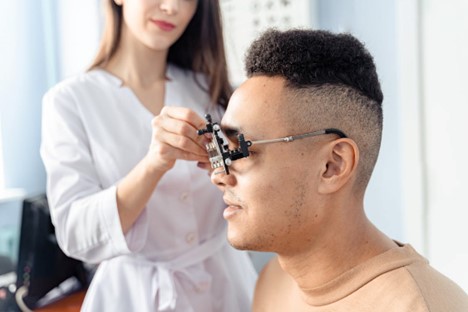News Americas, NEW YORK, NY, Weds. Aug. 2, 2023: Though healthcare has become a significant focus and priority over the past few years, access to health services is still a struggle for immigrants in the United States. Many immigrants face barriers to healthcare due to laws and policies that regulate access to health services, excluding racialized groups or undocumented individuals and their families. Many become disheartened or discouraged from seeking care and do not have the means to afford it, leading to disparities in wellness. When it comes to eye care – which requires annual exams, proper vision correction tools and procedures, and regular prescription updates – immigrants do not get many opportunities to receive the appropriate support for eye and vision issues due to being limited by their social and financial status.
Financial and social limitations
Eye care often comes with many expenses, especially for people like immigrants without proper health insurance. Eye exams and eyewear like eyeglasses and contacts can be costly. Despite the high costs, there have been solutions that have made these cheaper to access. It’s easier to buy glasses online with the help of technology and the internet, allowing people to get high-quality glasses without going to a physical store. Reputable online retailers often offer discounts and deals and even allow for purchases to be split into smaller installments. Many public programs also offer free or low-cost eye exams and glasses, making it easier for people of a lower income to get the care they need. However, even with strides in eye care access, many immigrants may not be able to afford this care regularly. Many may also not be aware of these programs and deals that can help them or may have difficulty applying for these plans due to language barriers.
Lack of health insurance coverage
A big hurdle many immigrants face regarding eye care is the lack of health insurance coverage. Undocumented immigrants are disadvantaged and ineligible for federal health care programs or benefits. The only coverage they typically receive is during emergencies and dire situations. While there is still much to be done to provide proper coverage for immigrants regardless of status, recent strides have allowed more immigrants to access healthcare plans. President Joe Biden recently announced that DACA recipients will soon be able to access Affordable Care Act (ACA) and Medicaid benefits, allowing them to access primary care, preventative services, and prescription medications when they enroll in these plans. Immigrants eligible for this program may have an easier time finding insurance plans that cover eye care costs. Even with these advancements, however, immigrants may still struggle due to policies and laws that prevent them from being covered by insurance.
Discrimination
Immigrants of minority ethnic groups and marginalized communities often face difficulty accessing healthcare. Biases can greatly affect medical outcomes; prejudging individuals by appearance, manner of speaking, or skin color can lead to incorrect judgments, undermining immigrant patients’ health concerns and preventing them from getting adequate care. Under-representation of minority groups in eye care is also a significant barrier to eye care, as immigrants of specific racial or ethnic communities may feel more understood and cared for by someone they can identify and connect with. Unfortunately, racism leads to a vicious cycle, as minority individuals aren’t given the chance to study ophthalmology, as they’re typically at a financial disadvantage and are also underrepresented in educational institutions. Immigrant discrimination in eye care is a structural issue that is difficult to address.
What can be done?
Barriers to eye care for immigrants are extensively embedded into healthcare policies and systems. Laws that exclude them from insurance coverage or health plans and little to no means to accommodate for language or financial barriers further impact their health outcomes. When they do receive care, they’re faced with high costs and even discrimination. To make eye care more accessible to immigrants, understanding their plight should be a priority. Programs and initiatives that provide eye care are now more widespread, but they may lack the access or ability to apply for these services. Addressing that struggle, for one, can help them seek accessible and affordable eye care or glasses. On a larger scale, more needs to be done to address the structural inequalities immigrants face in healthcare and beyond. Policy changes may be the key to ensuring long-term eye care for immigrants.










